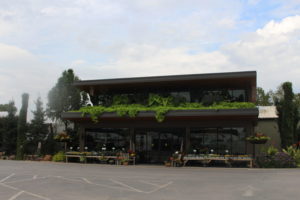A New Demographic
I receive an unbelievable number of trade magazines. My best estimate is that I receive somewhere in the neighborhood of 15-20 trade magazines per month, spanning everything from retail displays to horticulture journals to magazine publishing (yes, there is a magazine for people who publish magazines). Even with five hours per week devoted to reading magazines, I still get backed up, so forgive me if the information I’m about to relate is a few months old. It was a shocker nonetheless.
In the November issue of Retail Merchandiser (this is a really good source for information about what the mass retailers are up to, and it often provides trend information applicable to our market as well), an article about female consumers really hit home with me, since their purchases comprise the majority of garden center sales. According to Harry Balzer, vice president of NPD Group’s food consulting services, in an address to the Emerging Trends in Retailing conference, the number of working women is starting to decline. Women started entering the outside work force in the 1950s, with 6, 8 and 6 percentage point increases marking the trend’s heyday in the 60s, 70s and 80s, respectively. By 1990, the percentage of women entering the work force had slowed to 2 percent, and so far, the percentage of growth since 2000 has been flat or declining.
I was shocked when my own investigating proved these numbers to be accurate. Could they indicate a pretty scary new reality for our industry that has started focusing so heavily on making things easier for busy, typically female, customers (see Catherine Evans’ Market Watch on page 62, which identifies easy gardening as one of today’s hottest trends)? Could these numbers point to a new way of garden retailing? Are you going to have to reinvent your marketing message? Your business?
Using the Numbers
The first thoughts that ran through my head were wild ones about how radically this new demographic of stay-at-home moms would affect our industry. But, then I started to see alternate interpretations. Couldn’t the numbers simply indicate that women in the work force had reached saturation level? As a market matures, we would expect to see declining growth…fewer women are not entering the work force now than were 10 years ago; the year-over-year growth rate has just started to slow.
Thinking this made me feel a lot better — like my whole concept of lawn and garden retailing was not about to turn upside down. Back at a normal rate of respiration, I realized that regardless of how this data is interpreted, it points to a very important truth for our industry: We need to constantly reevaluate our target market. Are fewer women working outside the home in your market? I see it everyday in the people I know. If so, what does that mean for your business in the short term? Long term? How do you need to shift your marketing message? How quickly do you need to do so?
Knowing about emerging trends or shifts in demographics should not necessarily be a cause for alarm, but it should be a reminder to you that your business exists at the pleasure of your customers, and if you’re not focusing on their needs, you could become outdated and eventually obsolete.


















 Videos
Videos





